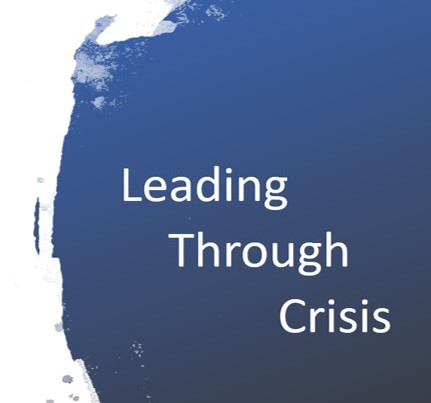
Leadership Insights from Admiral Mike Rogers (Ret.)

In a piece for The Business of Government magazine, “Power, Security, and Leadership”, I wrote: “Leaders are responsible for envisioning, shaping, and safeguarding the future, creating clarity amidst uncertainty. This is no small feat and it is made increasingly difficult in the 21st century where rapid, unforeseen change seems to be the only constant.”
I was reminded of this insight when I came across a recent webinar featuring Admiral Mike Rogers (Ret), a senior fellow and adjunct professor at the Kellogg School of Management at Northwestern. Admiral Rogers offers insight into specific qualities a leader needs to successfully navigate a crisis that seems to perpetuate and mutate with no discernible end date.
At the beginning of such a crisis, Rogers acknowledges there’s adrenaline, excitement, and perhaps a true sense that you’re going to beat this and come out on the other side. But, “then you find yourself,” Rogers admits, “month after month, dealing with uncertainty, waiting for something to happen in a high state of readiness.” Such situations can take their toll on even the best leaders. So, what can leaders do when confronted with a crisis with no expiration date? Here are some insights I gleaned from Admiral Rogers.
- Know yourself. Leaders must know themselves and know their red lines: what you are comfortable doing and what is a bridge too far. Leaders should have such parameters set before a crisis. “Because when you are in the middle of a crisis,” Rogers counsels, “when emotions are flying, you are not getting enough sleep, and you don’t have enough information and that is not the time to suddenly ask yourself: ‘should I do this or not do this…Sometimes the pressure to 'just do something' can drive you up to the edge and sometimes over that line.”
- Keep front and center those you lead and those you serve. During a crisis such as a natural disaster or a pandemic, a leader must keep front and center those they lead and those they serve. “As a leader,” notes Rogers, “you have to understand what pressures your workforce is dealing with now that they weren’t three months ago. What are their concerns?”. This also applies to those most impacted by the crisis. Communication is key, but an integral, albeit often overlooked, aspect of communication is actively listening. Admiral Rogers emphasizes listening and hearing those around you as critical to leading during a crisis. He also underscores that a leader can “help people cope with uncertainty by creating new routines that provides stability and enables them to better pivot” during and after a crisis. The longer a crisis goes on the more important this focus will become as stress and frustration increases and new issues emerge.
- Situational leadership is key. Leading in an extended crisis is different from leading in a crisis that is short in duration. In the former, leaders will find themselves in a marathon rather than a sprint and will need to train themselves accordingly. He recommends that a leader step back and assess the distinct attributes associated with crisis. They are marked by a high level of uncertainty, increased anxiety and stress, and higher than normal expectations. “Given these attributes, the same skill set one uses to excel day to day during times of stability are not really optimized for leading in crisis…it’s not enough,” explains Rogers. Sometimes the situation dictates the skills necessary to lead through it. It is always incumbent on a leader to craft and communication a vision for how to get through it. According to Rogers, relating to his own leadership experience during 9/11, build your strategy on what you know rather than worrying about what you do not know. During a crisis, don’t let things get worse, reduce uncertainty as best you can, and be comfortable making decisions with incomplete information. Also, throughout the crisis, leaders must continually reassess the risk profile of the situation. “What is it that potentially puts at risk our ability to execute our mission,” advises Rogers. As risks shift opportunities may arise and leaders must assess new avenues for achieving outcomes.
Whether you are leading or advising a leader always connect your vision, advice, and/or recommendations to outcomes. A key question is: what are we trying to accomplish? It is imperative for both an advisor and a leader to understand objectives and find the most effective ways to achieve them. If you advise a leader and they are heading in a direction you think less than prudent, then discuss with them the second and third order effects of actually going in that direction and how it may not achieve the leader’s desired outcome.
“We live in a world of increasing complexity and uncertainty,” Rogers acknowledges, “I don’t see that changing in the near term, which means we are going to have to figure out how to operate in it…we need to ask ourselves what can we do to make things better.”



